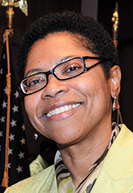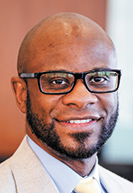Subscriber Benefit
As a subscriber you can listen to articles at work, in the car, or while you work out. Subscribe NowIn two of the most significant decisions of its most recent term, the U.S. Supreme Court last month issued opinions ending affirmative action as it’s been known for 45 years and tossing the Biden administration’s plan to forgive billions of dollars in student loan debt.
The rulings weren’t necessarily surprising to many given the court’s 6-3 conservative majority. Indeed, the court’s liberal justices were in the minority in both cases.
Now, Indiana law school leaders and students are trying to determine how the high court’s rulings will impact the future of legal education, both in terms of diversity and finances.
Indiana Lawyer spoke with law school stakeholders to get their takes on what the SCOTUS decisions mean for them.
____________________________________________________________________________________
It’s only been a few weeks since the U.S. Supreme Court struck down affirmative action in college admissions, removing race as a direct consideration for admission and forcing universities and law schools to rethink how they can recruit and maintain diverse student bodies.

Indiana University Robert H. McKinney School of Law Dean Karen Bravo, as well as other law school deans and administrators, say they are still wrapping their heads around the decision and what it means for their schools.
Bravo said it’s still early to know the impact of the decision or how IU McKinney will modify its admissions and recruitment efforts.
But what she does know, she said, is that the ruling doesn’t change the law school’s commitment to diversity.
“I think it is our duty that the law school continues to serve as a mechanism for law students from diverse backgrounds to come and receive an education,” Bravo said.
In its June 29 decision, the high court’s conservative majority overturned admissions plans at Harvard College and the University of North Carolina, the nation’s oldest private and public colleges, respectively. The vote was 6-3 in the North Carolina case and 6-2 in the Harvard case, according to The Associated Press.

Aaron Taylor, executive director of the AccessLex Center for Legal Education Excellence, which advocates for affordability and access to law school, told Indiana Lawyer that all the research his organization has seen points to declining enrollment at law schools for Blacks, Latinos and other underrepresented groups following any kind of state bans on affirmative action.
The center published a paper, “‘Freedom Is Not Enough…’: Affirmative Action and J.D. Completion Among Underrepresented People of Color,” which noted that state-level affirmative action bans over the years have led to a five-percentage-point decrease in the proportion of law degrees awarded to underrepresented people of color.
According to the center, those trends intensified over time, from an average decrease of four percentage points one year following a ban to a decrease of seven percentage points five years later.
“What we’ve seen is it reduces the number of and percentage of people of color in law schools,” Taylor said.
Like Bravo, Taylor said he thinks most law schools are still studying the Supreme Court decision and how it may impact their admissions process.
While the decision wasn’t a surprise, Taylor opined, “This is the most significant departure from previous precedent that we’ve seen.”
Indiana impact
Other Indiana law school deans and administrators said they, like Bravo, would study the Supreme Court opinion and what it means for their schools. The leaders of the Hoosier law schools each represent diverse “firsts,” including Bravo being the first person of color to lead IU McKinney, Dean G. Marcus Cole being the first Black person to lead Notre Dame Law School and Dean Christiana Ochoa being the first Latina to lead the IU Maurer School of Law.
Rev. John I. Jenkins, president of the University of Notre Dame, issued a statement on the decision on behalf of the entire university.
“At Notre Dame, our Catholic mission compels us to build a class reflecting the diversity of experiences and gifts of the human family. We undertake a comprehensive assessment of applicants, admit talented students with interests and aspirations consonant with our mission, and provide opportunities for a wide range of young people. These commitments are as meaningful today at Notre Dame as they were yesterday. We will study the Supreme Court’s decision and consider any implications for our admissions process as we strive to fulfill our distinctive mission,” Jenkins said in the statement.

James Boyd, senior communications director at IU Maurer, pointed to a June 21 letter signed by 15 Big Ten law school deans, including Ochoa, that affirmed their commitment to advancing diversity, equity and inclusion through legally permissible means, regardless of the outcome of the SCOTUS cases.
The IU Maurer dean also told students that the Big 10 law schools would be hosting two webinar panels in July to the discuss the opinion.
Ochoa said internally, the law school is keenly aware of the potential impacts of the Supreme Court decision.
“Members of the admissions office, our Office of Student Affairs, our faculty, have and will continue to participate in campus, university, and national conversations as all law schools and higher education institutions navigate this changed landscape,” she said.
Some state lawmakers also commented on the Supreme Court decision.
Rep. Cherrish Pryor, D-Indianapolis, argued the ruling undoes critical work Black activists and activists from other minority communities have done for decades to level the playing field in higher education.
“Affirmative action does not mean, nor has it ever meant, that unqualified students are accepted into colleges and universities simply because of the color of their skin,” Pryor said. “It simply guaranteed that qualified minority students were given a chance to achieve a higher education.”
Personal, diversity statements may become more ‘prominent’
 According to the AP, the affirmative action cases were brought by conservative activist Edward Blum, who also was behind an earlier affirmative action challenge against the University of Texas, as well as the case that led the court in 2013 to end use of a key provision of the landmark Voting Rights Act.
According to the AP, the affirmative action cases were brought by conservative activist Edward Blum, who also was behind an earlier affirmative action challenge against the University of Texas, as well as the case that led the court in 2013 to end use of a key provision of the landmark Voting Rights Act.
Blum formed Students for Fair Admissions, which filed the North Carolina and Harvard lawsuits in 2014. The group argued that the Constitution forbids the use of race in college admissions.
Following the SCOTUS ruling, Students for Fair Admissions issued a statement that called the decision a “restoration of the colorblind legal covenant that binds together our multi-racial, multi-ethnic nation.”
“The polarizing, stigmatizing and unfair jurisprudence that allowed colleges and universities to use a student’s race and ethnicity as a factor to admit or reject them has been overruled. These discriminatory admission practices undermined the integrity of our country’s civil rights laws,” part of the statement read.
Even with the Supreme Court decision on affirmative action, Taylor of AccessLex said there is nothing that prohibits getting input from students about how race has impacted their lives or motivations to attend law school. In admission essays, for example, students can discuss what it means to them to be a person of color.
“Personal statements, diversity statements, they may become more prominent in the admissions process,” Taylor said.
Bravo said IU McKinney has done better in some years than others in having a diverse student body, and ultimately wants to reflect society with its students.
“It’s not a numbers-driven process. It’s holistic,” she said.•
Please enable JavaScript to view this content.

